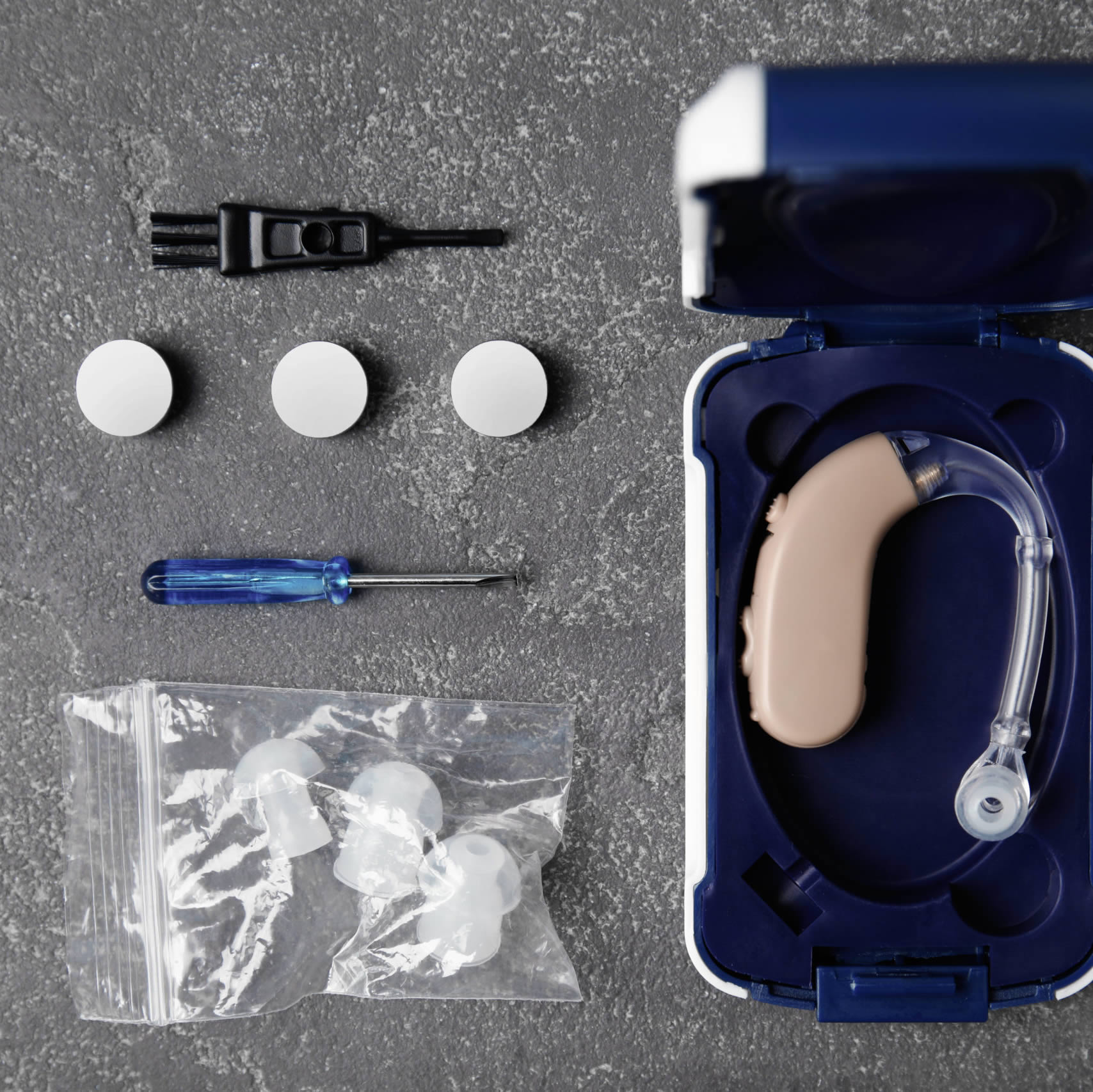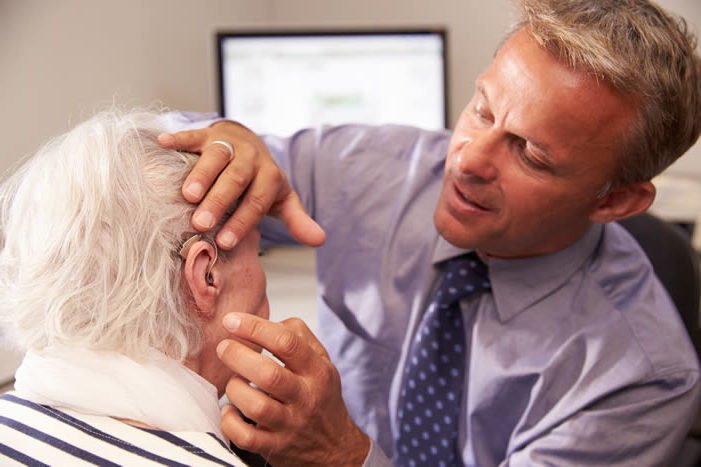So, whether you’ve just had new aids, or worn them for years, you might need to know when to carry out the required maintenance on them – such as changing the domes, the wax filters or the tubing for your behind the ear aids?
Your hearing care professional would have fitted the hearing aids on you and programmed them using a computer, to set the sound just right for you. Then he or she probably may also have given you a lot of information about the hearing aids?
All that information that the audiologist gives you is quite often a lot to take in within that fitting appointment. It is likely you will have been shown how to insert and remove the hearing aids, change the batteries (or use the charger), and also shown how to clean the hearing aids – you may also have been given instructions on using an app on your smartphone to control them. However, all this new information can be quite overwhelming and it is easy to forget every detail of care and maintenance of the hearing aids.
How often?
So how often should the tubing of your behind-the-ear (BTE) hearing aid be changed? When do you need to replace the domes of your receiver-in-canal (RIC) hearing aid? What exactly is the point of a wax guard/filter?
On average, hearing aid tubing should be replaced every four to six months. Domes should be replaced every 2-3 months, and wax filters should be changed every month.
Many new hearing aid users do understand that proper care and maintenance of their hearing aids is an important part of caring for their new investment. However, it can be quite a challenge to remember all the details of what to do and when!
Different styles – different maintenance?
Different styles of hearing aids DO require different methods of care and attention. BTE hearing aids have tubes that should be changed when they become hard and brittle. RIC hearing aids (open fit aids) often have domes that need to be replaced when they become old and worn – the receivers may need replacing by your audiologist. Wax filters may be present on various styles of hearing aids, these may need to be changed more or less often, depending on a variety of factors.
When to change the tubing on my behind the ear aid
Tubing is the clear or opaque section that connects a behind-the-ear hearing aid to the custom-made earmould. It comes in various thicknesses and should be soft and pliable. A soft and flexible tube allows for the best sound quality coming from the aid into your ear, and also maximum comfort on the ear itself.
Over a period of time, the tubing can become brittle and hard and may even crack. In addition, wax and debris may collect in the tubing and earmould. This will undoubtedly affect the sound quality of the instruments and also the comfort of the hearing aid on the ear. Earmoulds should be re-tubed every four to six months to maintain them working at their optimum performance levels.
How do I re-tube my earmold?
You can bring your earmoulds to your audiologist to have them re-tubed. You can also ask your audiologist to show you how to re-tube your earmould yourself – you can then see whether it is something you can manage on your own.
To re-tube, your earmould, follow the instructions below. You will need new tubing and a small pair of scissors. You can order new tubing from the Online Shop, which you will find a link to at the top of this webpage.
- Gently pull the old tubing from the earmould. Do not throw the old tubing away as it can be a guide for measuring the length of the new tubing later.
- Insert the tapered end of the new tubing into the earmould. Thread it through the earmould until it comes out the other end – the end that fits inside your ear.
- Pull the tubing until the bend reaches the mould.
- Cut the tapered tubing as close as possible to the end of the mould. If a small portion of the tubing is sticking out, it could cause your ear to become sore.
- Use the old tubing that you saved and line it up with the newly threaded tubing. Cut the end to the same length.
- Push the end of the tubing onto the plastic earhook of your hearing aid and turn it in the correct direction to comfortably sit in your ear.
When should I change my domes?
Domes are pre-sized, disposable earpieces that are placed on the hearing aid receiver tube or a thin tube, depending on which design you have. They are made of plastic and can come in different shapes and sizes. A proper fitting dome can make a huge difference in comfort and sound quality when wearing your hearing aids.
What is the difference between an open-style, a closed-style, and a power dome?
- An open style dome has small holes, which allows sound to pass through. This helps people with certain types of hearing loss from experiencing what is called “the occlusion effect.” This can give some people the sensation of hollow or booming sounds, especially from their own voice. This experience is similar to putting your fingers in your ears and listening to yourself talk. Open domes may be the right choice for some people as it can allow certain pitches to enter the ear canal without amplification, thus making the sound seem more natural.
- A closed style dome does not have any holes in it. It is intended to reduce natural sounds so that it can more aggressively boost the sound level through the hearing aid. It can also boost low-pitched sounds for the person wearing the aids. Closed style domes are often selected for patients with more severe hearing losses.
- A power dome is the most occlusive type of dome and is often used for people with more significant hearing losses. They are often used to occlude or block the ear for more power and to reduce feedback or whistling if it that’s an issue for the user.
When should I replace the domes?
Hearing aid domes, whether open or closed, should be changed every few months. Some audiologists may recommend dome changes every 1-2 months, while others may recommend a slightly longer period of time. Either way, domes need to be changed regularly in order for the sound quality to remain clear.
All styles of domes, whether open, closed, or power, can be cleaned in between changes with a small brush or wax pick. Just use the brush regularly to remove wax and debris from the end of the hearing aid.
When do I change the wax filters?
Wax filters (also called wax guards or wax traps) are small plastic pieces that are attached to the hearing aid. The aim of these is to prevent wax, debris, and moisture from getting into the receiver (or speaker) of your hearing aid. This is very important. If wax, debris, or moisture does get into the receiver, it could greatly affect the sound quality or cause the hearing aid to malfunction.
It is difficult for an audiologist to advise a patient how often to change their wax filters. This is because each patient is different. Some people need to change them almost every month. Other people may not need to change their wax traps for several months. It all depends on the amount of wax present in the ear canal. Some patients get a lot of earwax while others do not. On average, people need to change their wax filters every month in our experience.
How will I know when the wax filters need to be changed?
If your hearing aid is “dead” despite you even fitting a new battery (or you know it has fully recharged), or if your hearing aid sounds weak even though your volume is turned up, it might be time to change your wax filter. Take a good look at the wax trap on your hearing aid (you may need to remove the plastic dome on your hearing aid first). See if you can tell if the wax trap is plugged up with wax. Most wax traps have several holes in the bottom that can be seen with good vision. If the holes in the wax trap are blocked, then you know it is time to change the wax trap.
How do I change the wax trap?
All hearing aid manufacturers have different designs of wax filters. Most have a stick or handle with a new replacement wax trap on it. The other side has a point on it that is used to take the old wax trap out. When the point is inserted into the old wax trap, it will connect. When you pull it out of the hearing aid, the old wax trap should be attached to it. You can then insert the new wax trap into the hearing aid.
Summary
Hearing aids are often a big investment. Proper care and maintenance of the hearing aid and all its parts are important so as to maintain optimum performance.
Hearing aid fitting appointments are often overwhelming. You are not only getting used to a new way of hearing, but you are also given a lot of information. It can be difficult to remember all the important aspects of hearing aid care. Hopefully, whilst this blog can’t change the items for you, it hopefully gives you a little more knowledge in terms of what to do and when.
Browse our hearing aid accessories >> to quickly find many products to help you keep you’re hearing aids in great condition.




